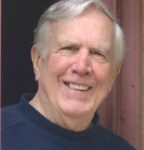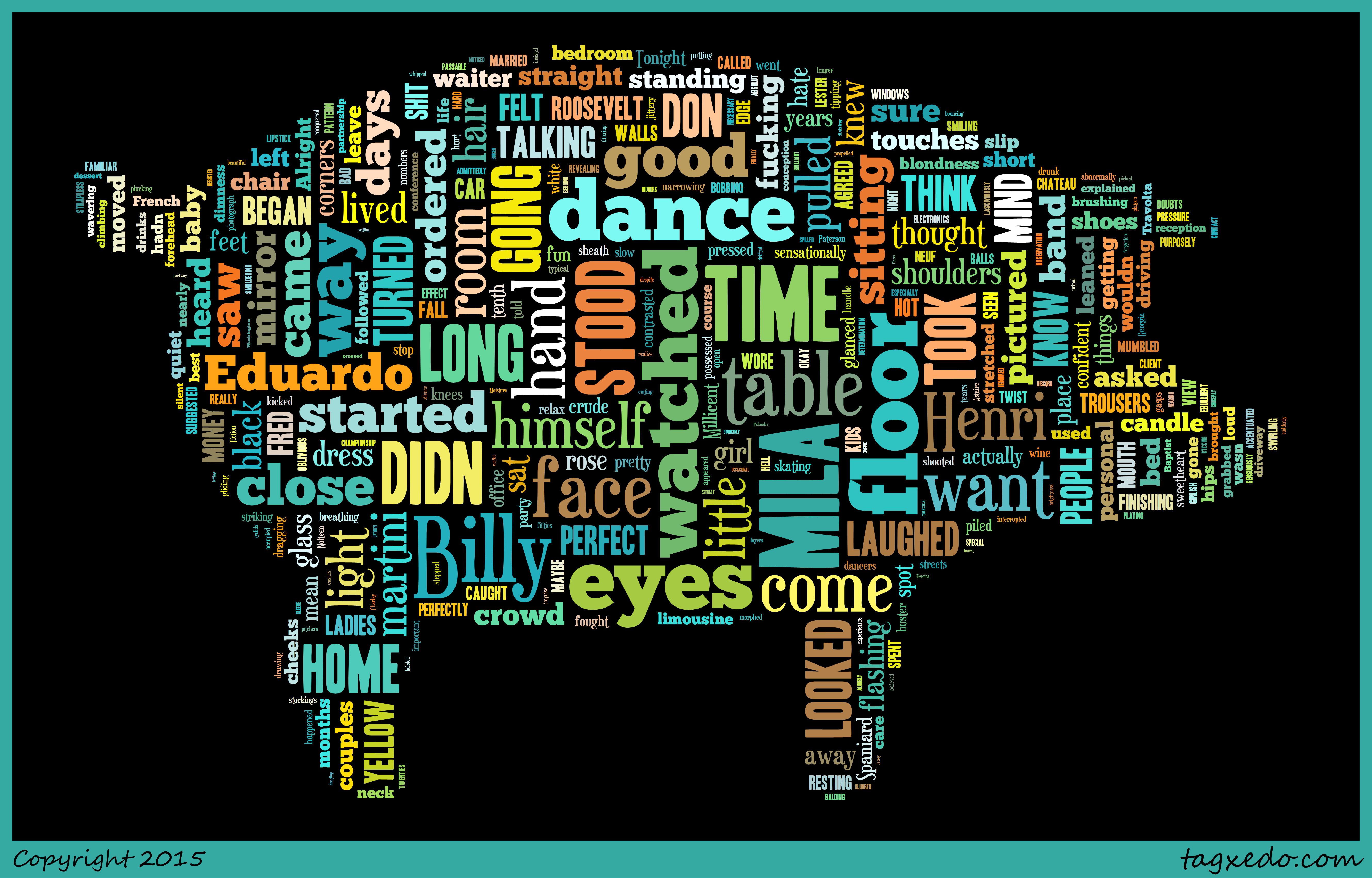I was introduced to the subject of word clouds through a blog post by Jeri Walker-Bickett on her web page, and thought I’d try one on my short story called “A Pig For Love”. I used the Tagxedo program (there are many such programs, each with their pros and cons) to create an image in the shape of a pig (there are many shapes to choose from). Inside the outline of the pig, words from the short story are displayed. The font, color, layout and theme are variations from which you choose. The result: a whimsical image that draws your eye.
But, more interesting perhaps is the part of the program that addresses the issue of word choice I used in the story. You immediately detect the kinds of words and the frequency of their use indicated by the relative size of the word in the image. For instance, nouns are easy to find: Billy, Mila, Eduardo, home, table, room, floor, money, eyes, mouth, feet, knees, face. The largest nouns: dance, face, time, eyes. There are lots of verbs of course: took, pictured, turned, glanced, watched, laughed, looked, possessed. The largest of them: come, want, looked, watched. There are very few adjectives (bravo say the writing experts). There are a few adverbs: perfectly, rarely. Gerunds are there aplenty: skating, standing, dragging, bobbing, wavering, tipping, breathing, resting. The largest: I admit, I can’t really see that.
Over all, I would say that the story is told using common words. The extensive use of words ending in “ing” can indicate either that I’m using these words as “verbal nouns” or, horrors, using them in a passive voice mode.
Curious about this short story? It’s in my book called Baghdad on the Wabash and Other Plays and Stories at Amazon. Go there, and read the “sample” from the book: A Pig For Love. It’s good. You’ll like it.

